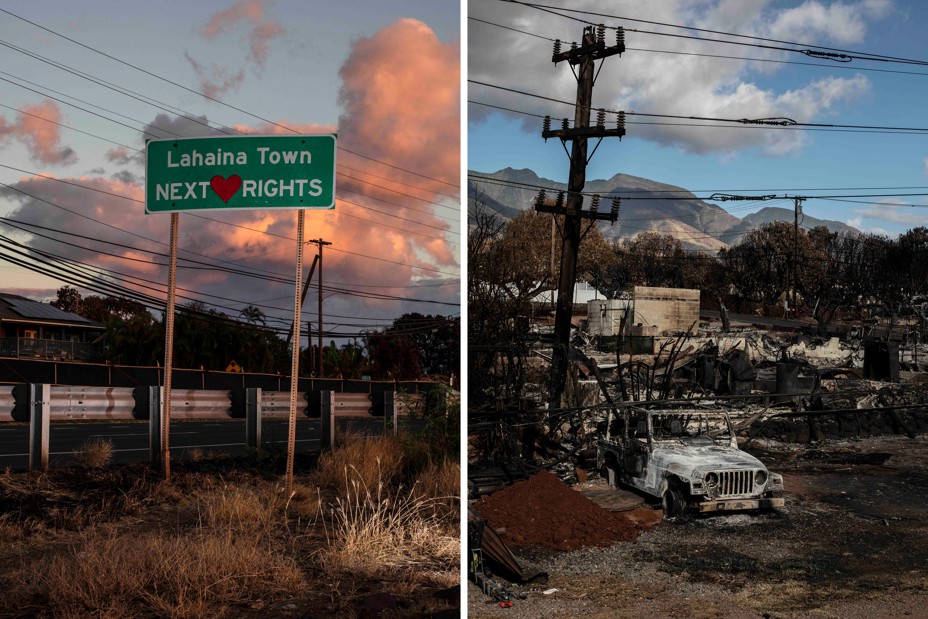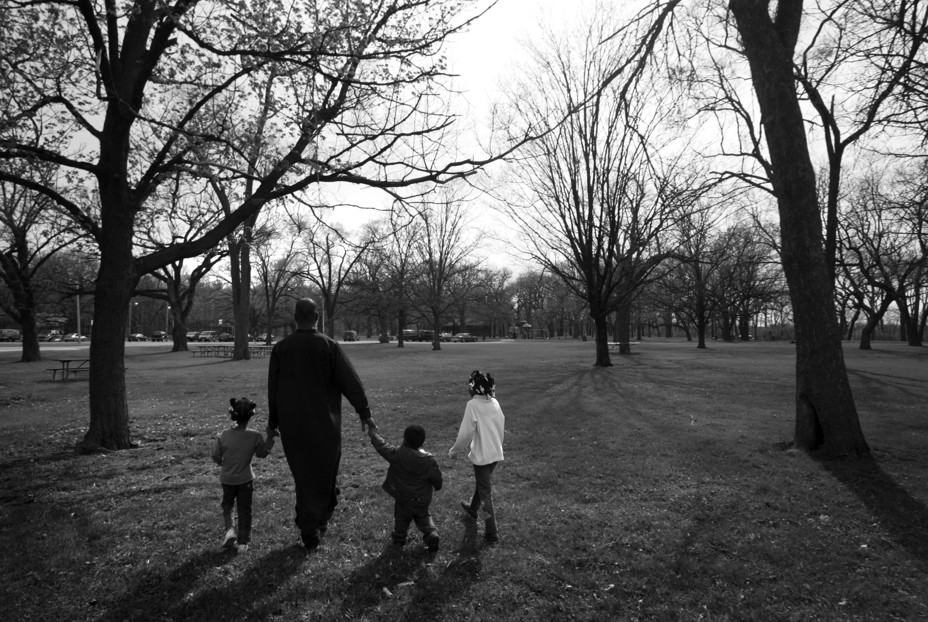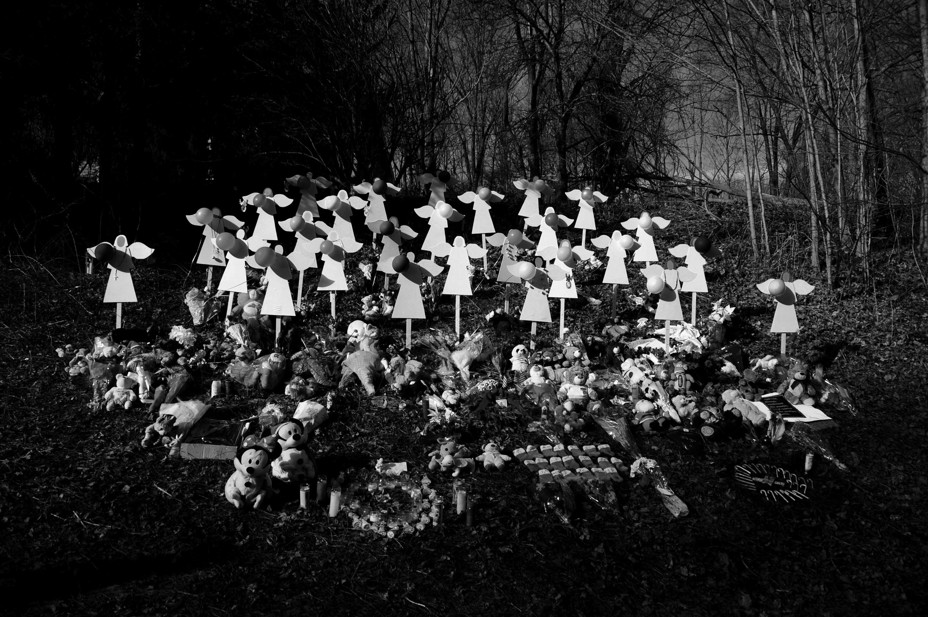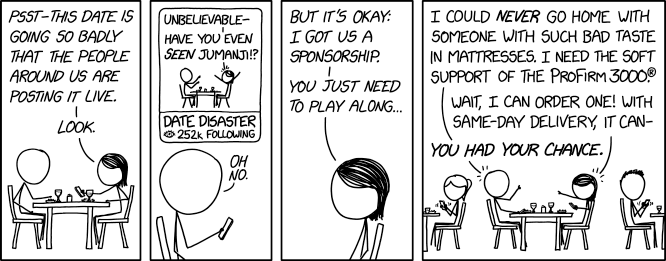This is Work in Progress, a newsletter by Derek Thompson about work, technology, and how to solve some of America’s biggest problems. Sign up here to get it every week.
Several weeks ago, I asked readers to tell me what people don’t get about their jobs. I thought we might receive several dozen replies. Instead, we received several hundred. We heard from teachers and professors; from opera singers and orchestra musicians; from corporate executives and tech workers; from screenwriters, playwrights, and book editors; and from sailors and summer-camp directors.
Last week, I read all of your emails. Today, I’m presenting more than two dozen replies in alphabetical order—from A(id workers) to T(impanists for metropolitan orchestras). I’ve provided a one-line summary of each respondent’s answer to the prompt followed by an edited and often condensed quote.
I hope you have as much fun reading these answers as I did. You’ll learn that humanitarians aren’t as nice as you dreamed; that some pastors prefer funerals to weddings; that chief executives still have bosses they’re afraid of; that many pharmacists are anti-medication; and that for screenwriters, talking is a more important skill than writing.
Aid Worker
It isn’t about charity. It’s about politics and stability.
International aid is almost never handing out bags of food or clothes to people. It is about working with national partners and hosting governments to build systems that deliver better for people. It is a lot more complicated than giving stuff away.
International aid is not charity. It is an investment in geopolitical stability. And it is less than 1 percent of the federal budget in the US. And many other countries devote higher percentages of their GDP than the U.S. Think about that in relation to military spending when things fall apart, and you see it’s really a bargain.
Book Editor
It’s a sales job.
A book editor spends 90 percent of their time working on selling a book, that is, publishing, and only 10 percent of their time working with its author to make that book the best it can be, that is, actually editing.
Chef
It’s not like being a visual artist with food. It’s more like being a middle manager (with food).
As a chef, most people assume that I spend my day eating food and making up new dishes. The reality is that I am a middle manager who spends most of my time managing my employees, writing schedules, completing checklists, and placing orders. So much less glamorous than most expect.
Corporate Communications Executive
People think the job is just writing. Nope.
I work in corporate communications for a Fortune 500 company, and people often think they can do my job. They think it’s just writing and they can do it themselves. Uh, no. Yes, strong writing is required as part of the job, but corporate communications is more than that.
As communication professionals, we communicate company strategy and purpose to our employees, protect its reputation among the public, and connect employees to company culture through our work. Great communicators are thought leaders to senior leadership who intimately understand the business to develop and deliver communication strategies that result in increased employee awareness, adoption, or engagement.
We can work long hours, sometimes under tight deadlines with colorful personalities or in stressful situations. It’s not for everyone, but hey, I love my job.
Data scientist No. 1
STEM jobs are creative too.
I’m writing as a data scientist and wanted to give the common misconceptions about AI/machine learning more broadly:
It’s just math, not magic. A lot of people talk about machine learning in a very sci-fi manner. People worry if AI is becoming “sentient” or “too smart.” People tend to anthropomorphize the word learning in machine learning. ML is effectively math. All of these algorithms—even the complex deep-learning neural nets—are a mix of linear algebra and nonlinear equations. In middle school/high school, we learn to fit lines given data with the equation y=mx+b. This is what is called a parametric equation—we have to solve for two parameters: m and b. It’s a relatively simple equation, one that we can often do by hand or with minimal calculations. AI fits equations like this, but instead of simple equations with two parameters, these can be insanely complex and have millions or billions of parameters. The emphasis on machine in machine learning is the fact that these equations are just too complex for people to do by hand, so we rely on computers to do all of these calculations at speeds that no person could ever dream of doing on their own. So to summarize: When people refer to machines “learning,” they are referring to a computer filling in the appropriate parameters to a complex mathematical function; these parameters are determined from the data used to train this function.
STEM people are creative! There seems to be this stereotype that people in STEM—especially engineers—are super robotic. We think about them as just about as far away as possible from those in the arts in terms of creativity, but I think this is wrong! The best engineers are incredibly creative. Building good programs and writing good code is not just about knowing a coding language. You are constantly hitting roadblocks that require creative solutions. There are always tons of ways to make a script run, but it’s on you as the coder to design a solution that is efficient, scalable, easy to follow, and won’t cause future tech debt. This is not something a single-note thinker would be able to do well.
Data Scientist No. 2
Coding is a smaller part of tech jobs than the average person thinks.
The most common misconception about data science is the amount of time we actually spend coding. Coding is probably only 10 percent of our time and is often done in chunks of time (i.e., three days of lots of coding and then not much for a while). The vast majority of our time is Googling how to troubleshoot a bug, brainstorming how to code or solve a specific problem, learning new technologies/softwares, designing technical diagrams, using low-/no-code tools, and communicating with stakeholders. Coding is likely a smaller component of most tech jobs than the average person believes.
Debate Coach for High School
In this field, facts are less important than the presentation of logic.
There are lots of things people don’t understand about competitive debate. For one, people tend to overestimate the importance of rhetoric and formality. Using pretty words in a presidential debate might help score you some polling points. But nine times out of 10, competitive-debate rounds are won on logic, not polish.
For another, people tend to overestimate the importance of facts. I know that sounds bad. What I really mean is that citing individual studies and statistics is unlikely to score you points with judges. It makes sense if you think about it: There is so much data out there that no individual number can capture the full scope of reality. Who cares if a poll shows that 60 percent of workers hate their jobs? Your opponents can point to another study claiming that only 15 percent of workers hate their jobs, and unless judges want to spend hours scouring the internet to fact-check every single cited source, no one will get anywhere. Logic is much more convincing.
Personally, I think everyone could benefit from a year or so of debate coaching. Debating helps you gain confidence, think critically, and BS your way through job interviews and presentations. But competitive debate is not an accurate re-creation of any kind of real-life argument: There are strict and sometimes unintuitive standards that define what constitutes a persuasive case, and anything else is noise. Is it better for discussions about gun control and health care to take place in a simulated, unrealistic environment? Well, that’s up for debate.
ER Doctor
Yes, the job is incredibly stressful. That’s why you have to be incredibly prepared.
I am retired now, but the most common reaction when I tell people that I was an ER doctor for 40 years was “OMG, how stressful that must have been!”
The truth is, unless you are a rookie, you have experienced many, many heart-wrenching situations where very bad things happen to people. Similarly, you encounter innumerable situations in which you must make critical decisions without much information when the well-being of a fellow human depends on that decision. But, like the Boy Scouts, we are prepared. We are trained; we have necessary equipment; and we have a team to work with. We don’t feel helpless; we feel we are doing what we are there for. Having said that, I experienced anxiety almost routinely in situations where I was behind and people were waiting hours to be taken care of. That was stressful!
Financial Analyst
The job is about numbers. But everyone thinks in stories.
I am an analyst by profession. I read a lot; I write a fair amount; I build a lot of presentations and speak to lots of CEOs, boards of directors, ministers, and the like. Here is what people don't get about my job: Everyone thinks in stories. Perhaps data drives that story (or data IS the story), or maybe compounding anecdotes drive the story. Whatever it is, it’s a story. We are narrative creatures, and we want to be told stories, whether it is about scientific progress or human frailty or what the world will look like a year, a decade, a century from now. And not only that—most of the people that consider themselves the most rational/objective are the most prone to storytelling-path dependence, particularly as they become very successful. Story becomes mythos.
Humanitarian
“The biggest misconception I’ve found is that people think I must be a lovely person.”
I’m a humanitarian, currently in a war zone. My friends often assume I am standing on the back of a truck handing out supplies. But in fact I am currently sitting on a bench balancing my computer on my knee while I try to get enough internet to request more supplies from my logistics team and an updated budget from the finance team, and more time to finalize a report that was due a week ago to a donor.
The biggest misconception I’ve found is that people, especially on dating sites, think I must be a lovely person. Not saying I’m not nice. But I wouldn’t have gotten very far in this job if I weren’t ambitious, determined, and downright stubborn at times. The assumption seems to be that I do this out of the goodness of my heart. But actually I’m highly qualified (I don’t think I know anyone in the job without a master’s) and reasonably well paid (not compared to the private sector but you can’t spend much in a lockdown, so my finances are okay). I do it because I love it, not because I think I should. I’m also not naive, and even on my best days I don’t think I can save the world, or even the very small part of it I’m hoping to help. I’m just trying to stave off the worst until people and communities can start to get back on their feet.
Government Consultant
Government employees have become glorified project managers.
I work for a private-consulting engineering firm, but I’m among the hundreds of thousands of consultants that functionally operate the government. Since the ’90s the federal budget has quadrupled, but the workforce has remained the same. Rather than paying for federal employees, that money has gone to private consultants that do all the research, write all the reports, and recommend all the policy. Government employees have become glorified project managers. This is the model of small-government efficiency we’ve settled on as a nation.
Grape Grower
“The best fertilizer is the farmer’s boots on the ground.”
Our farming uses immigrant labor, provided by a farm labor contractor. We don’t ask if they are legal because the contractor is responsible for payroll. But if farmers didn’t use immigrants, we wouldn’t have the variety of food and the price would be far, far higher. Do Americans really want higher-priced food with less variety?
Farming requires patience, perseverance, flexibility, and ingenuity to fix things when they break. I never realized how clever my husband was until he fixed every piece of equipment we use.
The best fertilizer is the farmer’s boots on the ground. Walking your property tells you where water runoff occurs, where animals pose a threat, which micro-area needs a little more compost. Big commercial operations treat everything the same and do it mechanically, albeit at a lower cost but without the expression of the unique terroir inherent to your property.
IT Project Manager
“I have a B.A. in geography and do just fine.”
Most people assume I was a developer or have a computer-science or engineering degree and that I couldn’t possibly be a good IT project manager without this background. Actually, I have a B.A. in geography and do just fine in the IT world. Sure, I have limitations when the techies get into the weeds but I can also use my lack of formal technical skills to my advantage. For one, I’m not too proud to ask the dumb or obvious questions that my tech colleagues avoid for fear of looking less, well, tech savvy. No one expects me to know better.
Lobbyist No. 1
“Most people assume lobbying is legal money laundering. Most people are quite correct.”
I have worked as a lobbyist at the Texas Capitol for more than 20 years. Most people assume lobbying is legal money laundering, and most people are quite correct. However, not all lobbyists are money changers in the temple. In fact, many of us do not make campaign contributions, wine and dine legislators, or even work for big corporations or special interests. Many lobbyists also represent low-income families, nonprofit organizations, and, well, the not-so-horrible stuff.
Lobbyist No. 2
The industry isn’t just a bunch of unethical fat cats. (However, it includes unethical fat cats.)
First, I don’t buy elected officials. The money is used to build a relationship and keep them in office. I NEVER buy votes or access.
There are bad apples; we see them all the time. Most of us are ethically bound to never blend the line of an “ask” (for a vote or favor) and handing over a check.
Second, I’m not a fat cat. While there are some exceptions, a reception grip and grin is basically it. Sure, I can eat and drink well, but we spend 90 percent of our day walking from office to office.
Third, the American process isn’t broken, it’s just super, super slow and complicated. Hundreds of bills are signed into law each year. Getting those done is a considerable lift because only small groups care about them versus, say, the big transportation bill, clean-energy investments, or the CHIPS and Science Act. The small laws change people’s lives a lot more than anyone knows.
Partisanship is real and a myth at the same time. The GOP hated Trump! The Dems don’t all like Biden! The question is do they have the muster to admit it publicly? There are good people on both sides, but more often than not, the names you hear a lot of—a few southern and New England senators—are totally in it for the headline. The rest want to get stuff done.
Neurologist
They don’t all make “boatloads of money.”
If I were a procedural neurologist in private practice, I could make boatloads of money. I am an academic neurologist with a low-paying procedure and make a little over $200,000 a year. That is after 13 years of education and training and 25 years post-internship residency and training. The most we are able to receive in raises is 3 percent per year. I got one as well as a $7,500 productivity bonus this year. In the private sector you lose or gain money based on how much income you generate, or relative value units (RVUs). In academics we get an email each month telling us where we are on the expected RVUs. I am way over expected as I am classified as mostly clinical. The research and teaching I do is barely considered in calculating my salary. So, I just work harder, see more patients, and don’t make more money. I came to academics from the private sector for a variety of reasons and took a 50 percent pay cut.
I hate when I try to engage a patient in their care only to hear, “I’ve done my research.” So, your Dr. Google or Fox News is equal to my training and years of practice? Wow, you must be super smart. This was very evident when discussing COVID vaccinations with patients who were immunocompromised and at greatest risk.
Neuroscientist
“Drugs are weird. Brains are weird. Put them together, and it gets ineffable.”
Right now I'm running a study in which I give people psychedelics (think LSD, magic mushrooms, etc.) and then measure what happens to their brain activity. When I tell people what I do, the first thing people don’t get is that this is, in fact, a real job. It’s all legal and happening at a real university. I’ve had people just simply not believe me!
The second question I tend to get is: “How do you make sure no one gets addicted?” The answer is that we don’t really have to. Psychedelics carry very little addiction risk. They are about as addictive as meditation, or travel. I often forget how few people know this.
I also have to make sure no one has a so-called bad trip. This is certainly a complex task, but one thing I wish more people understood was that bad trips are not completely random. Though psychedelics are always a little bit unpredictable, it’s not like you take LSD and have a 50 percent chance of hell. The risk of anxious reactions can be greatly minimized if you know what you’re doing, and we don’t see bad trips in our lab very often. A lot of people I meet are surprised at how safe working with these drugs can be, mentally as well as physically.
But it’s also hard for people to get what I do because the effects of psychedelics in general are really tough to explain. Psychedelics cause an intensely altered state of consciousness in which normal, everyday existence can seem unrecognizable. They affect everyone very differently, and they can cause both absurd hallucinations and sensible personal insights. Many people simply find it hard to fathom that a drug could cause insightful, meaningful experiences for some people—“trips” that they cherish for a very long time. But this is routine. Even though it’s [prompted by] “just” a drug, most of my study participants say afterwards that the experience was one of the most meaningful in their entire lives (it usually makes the top five, or at least the top 10).
I don't really blame people for not getting my job, though. Drugs are weird. Brains are weird. Put them together, and it gets ineffable. If I didn’t love that, I wouldn’t be studying it.
Managing Director
Even when you run a company, you still have a boss.
The things most people don’t get about running a company are:
1) You still have a boss. You may have the ultimate power in terms of making decisions around the future of the company, but if you are not the majority shareholder, then you need to have those decisions approved at board meetings. Even if you do own the company, you may have a bank loan, so you have to do what they want (e.g., covenants), or you may have a significant client or supplier, which means you have to do what they want.
2) It’s all about people. To be honest, I didn’t get this before I moved up from CFO. However you want to phrase it—I prefer “right people in the right seats”—that’s pretty much all I think about. Why is that team failing? Is it the management, or the workload, or the dynamics within that team? Stuff fails and succeeds because of people, not tech.
Nurse
The air-traffic controller of the health-care system
Patients in the hospital have no idea how much bullshit, danger, and negative experiences we keep from reaching them. Even when we’re not physically with you, we are advocating for you and coordinating your care. We collaborate with pharmacy, respiratory, doctors, consulting teams, case management, social work, dietary/nutrition, imaging, physical therapy, occupational therapy, lab, phlebotomy, central supply, environmental services, transportation, even the chaplain. We are the middleman for all of those for every single patient. There’s so much going on in the background in addition to what patients see.
Opera Singer
More like a professional athlete than you’d think
One thing I’d say people don’t understand about this job is that it’s not all about "talent.” It's more about actual hard work. Working as an opera singer is more like being a professional athlete, rather than being a delicate “artiste.” You start out with some natural talent, then spend years of your life and a lot of money developing and honing and perfecting that talent to be viable and appealing to opera companies and other performing-arts organizations. The amount of success you may achieve (and whether that success allows you to make a living as a performer) is very much a crapshoot, dependent on luck and a whole host of factors over which the singer has little to no control.
Pastor
The funerals are more interesting than the weddings.
I have served as pastor of a few churches over the past 20 years. In addition to the weekly preaching, Bible study, and pastoral-care calls, I also have the blessing of officiating at funerals and weddings.
The experience of preparing for and officiating a funeral is infinitely more interesting and more important than the same work for weddings. The whole of the community is much more honest and real around funerals than weddings. It is on the occasion of death that we get down to the truly important things in our common life together.
Pharmacist
“I think most people would be shocked to learn how anti-medication some of us are.”
Most people have no concept of how their health insurance works or that we as pharmacists have no say in what insurance charges them for medications. Patients would be well served to review the details of their policies and compare coverage for the medications they need.
Additionally, many patients are unaware that we are charged a fee every time we submit a claim for insurance or a discount card. Lastly, as a pharmacist I think most people would be shocked to learn how anti-medication some of us are. Medications are seldom the sole factor when it comes to addressing health issues, and polypharmacy leads to countless adverse reactions, increases the risk of medication errors, and ultimately enriches drug companies who want you to remain unwell.
Postal Worker
Online orders have a hidden cost: “back-breaking” labor and unusual work hours.
What I want people to know about my job is that people are doing grueling, back-breaking work at all hours around the U.S.A. to get your Amazon and UPS packages to you. COVID might be starting to go away, but ever since people got used to ordering things from their couch, Amazon is bigger than ever. It never stops. I work at a local post office. Amazon now brings its first truck at 1 a.m., so that’s the time I have to go to work. It used to be 5 a.m.
Your package arrives in a shipment of large cardboard boxes and shrink-wrapped pallets. We break those down, scanning the barcode of each package and placing them in separate bins for the different carrier routes. It is grueling, almost soul-killing work—very physical. Another truck arrives anywhere between 3 and 5:30 a.m. Sometimes there’s a third truck. (Full-time workers are required to take a one-hour lunch on weekdays; part-timers are not. In an eight-hour day, we are allowed two 15-minute breaks. If it turns into a 10-hour day, we are allowed one more break.)
Sunday is no different, except that only two of us are there, and the carriers come in earlier. Holidays are the same as Sundays. I would like to ask people if they really need to have their packages delivered on Sundays and holidays. Workers are giving up much-needed physical rest and much-needed family time to process and deliver on those days. (Luckily there is a local union rule that management has to give us eight hours between the end of one day’s shift and the beginning of another shift. It’s nowhere near enough time to rest. But if it were up to management, there would be far fewer hours in between, that’s for sure.) For the first one and a half hours of the 1 a.m. shift, the building’s air-conditioning is not on.
Real-Estate Broker
They do more than just sit around and check Zillow. And most don’t work on a salary.
As a residential real-estate broker, I often encounter the perception that everything is on Zillow or Redfin and that all I’m needed for is my access to these listings. Your Realtor does so much more! Sure, you can find the listings, but we know of homes being sold off-market (pocket listings, they're called). More than that, we are your advocate for buying or selling a home. We have your back and will work so hard to help you earn or save the most money while buying or selling the right house.
Other broad misconceptions are around how we get clients and how we get paid. Every real-estate agent is out there marketing themselves, working by referral for the most part and not being fed leads (unless they buy them, and those are expensive and rarely pan out). Very few brokers work on a salary; we work on commission, period.
And while real estate is widely understood as a sales profession, we are truly here to help! We want to be a resource for our clients. I get so much satisfaction from having just the right contractor for a client at just the right time. The relationships built during these very emotional transactions ([a house] is probably your biggest asset!) are deep and lasting and make this a very rewarding line of work.
Sailor
“If something goes very very wrong, who are we going to call for help? Buzz Fucking Lightyear?”
I am a sailor by profession. A delivery skipper, to be exact. My husband and I deliver brand new sailboats all over the planet. Before anyone gets their panties all in a wad, let me just inform you that, yes, swearing like a sailor is a real thing. Because, well, we all fucking swear like sailors. Here are some big myths about my job and the actual reality that it is.
"You guys are living the dream!" If one more person says that to me I am going to fucking throat-punch them. Of course we are not. Whose fucking dream is it to have a goddamn hurricane form overhead while they are working? We have had it happen, and it sucks. There is nowhere to run or hide.
“You must have a great time out there, watching the sunset, kicking back, having a beer. What a life!” Fuck you. We don’t drink while sailing. You would be an idiot to drink while sailing, even on your own boat. When things go wrong at sea, things go wrong very very fast, and it’s usually a cascading series of events. If you are hanging around out here being a drunk fucking slob, chances are you are going to get hurt, hurt someone else, die, or all of the above.
“It takes that long to get to Tahiti? Don’t you stop?” What are you a fucking moron? There’s nothing out there. Look at a goddamn map. At one point, in the middle of the Pacific, we are in what is called the Null Zone. We are actually closer to the people on the International Space Station than we are to actual land and people. It’s a very cool fact, but also intimidating. If something goes very very wrong, who are we going to call for help? Buzz Fucking Lightyear? When I am sailing the boat, my husband sleeps and vice versa. We see each other at watch change and our one big meal a day, dinner. Unless something goes wrong and then it’s all hands on deck until it’s not wrong anymore. That could be anywhere from four hours to four days. Or more.”
Screenwriter
Most of the job involves talking, not writing.
I went to film school with the intent of becoming a writer/director like Paul Thomas Anderson or Spike Lee but ended up focusing on screenwriting because I was bad at making friends and raising money, both of which you needed to be able to do to progress through the directing program by making short films at the college I attended. Productions cost money and need crews, who knew?
I like writing. I like the battle that goes on between my brain and the blank page. I’m up against it on my own, and it suits me. But here’s the thing nobody tells you when you decide you want to be a screenwriter and especially a TV writer: Most of your job involves talking, not writing. You have to sell producers on your ideas, then you have to discuss their notes, then you have to do it all over again with the studios and networks, and then you have to do it even more as your script veers quixotically toward production as more and more collaborators get involved. You have to talk to directors and actors. It’s endless.
The business of writing in Hollywood then is really the business of talking. And those who are good at talking can be very successful—while also being not that great at writing. Contrarily, if you can’t talk to other people but can write beautifully, you are likely screwed, because the process of making film and TV is so collaborative you have to be able to communicate your ideas verbally. If you only want to write, don’t come to Hollywood.
Software Engineer
“It’s amazing that any of this shit works at all.”
I work in the field of site reliability engineering, a niche within the tech industry at the intersection of software engineering and operations. Site reliability engineers are the folks tasked with making sure the largest websites, apps, and networks in the world are up and running. All. The. Time. They are often the first ones on the job when one of those things goes down.
There are two things the world should know about the work we do:
1. It's amazing that any of this shit works at all. The simple act of performing a search for Best Burger in Minneapolis from your phone requires not only hundreds of software systems to execute code in less than one second, but also communication via radio waves, copper cables, and fiber-optic lines. It’s mind-boggling that it even works, let alone that it works almost all the time.
2. Everything is broken all the time. The internet is incredibly resilient. The network, and the software systems that run on it, are designed to expect failures and minimize disruption from them. Which is a good thing, because failures happen constantly. Could be a bug in the new code, a ship drops an anchor on a fiber-optic line, or—and this my favorite—some of these systems grow to be so big that they take on emergent properties that no one intended or predicted, resulting in unexpected failures.
So next time you can’t post a snarky tweet because Twitter is down, or you can’t buy an organic cheesecloth because of an esoteric error message, just remember how crazy it is that any of this works at all.
Stenographer
“I am certified to capture the spoken word, up to 260 words per minute, and instantly create a written record of what was spoken. I do so with 99.5 percent accuracy.”
I work as a freelance deposition reporter. The transcripts that I produce are often used in court to impeach a witness, to support a party’s claims, to provide information in a trial when a witness is not available to appear live, or for any other reason deemed appropriate by the court.
The keyboard is the part of my job most people find fascinating. With just 21 letter keys (plus an asterisk key, a number bar, and eight number keys), I can write any word in the English language with just a few keystrokes. (There are specialized keyboards for many different languages; each one is configured to best suit that language.)
The stenographic keyboard is a marvel and I could go on for days about its beauty. Here’s a basic explanation [from the Made in Chicago Museum]: “The left side keys represent initial consonant sounds, the right side represents ending consonant sounds, and four bottom keys (operated by the thumbs) create your vowels. ‘The genius of the Ireland keyboard—the simplicity of it is fantastic,’ Robert Wright later said. ‘Every sound is in the position it is on the keyboard because of the frequency with which it occurs in the language, and, secondly, the sequence in which it occurs. You have two total phonetic systems under each hand.’”
Stenography is a phonetic, syllabic language. To write a word, I may depress one or, usually, multiple keys at one time, and many words require more than one keystroke. These keystrokes are represented in letters, but the letters often do not mean what they look like. For example, to write the word background, I would tap the keyboard twice, first for the sound “back” and second for the sound “ground.” The stenographic output would be: /PWABG/TKPWROUPBD. When I write, I also have to be mindful of homonyms, regional accents, proper names, punctuation, certain nonverbal actions, prefixes and suffixes, identifying who is speaking, and probably a hundred other things that by now I don’t even think about, I just do. All while folks are speaking up to 300 words per minute.
Summer-Camp Director
Folks, it’s a desk job.
I am a summer-camp director, and people don’t seem to realize that it’s not all fun and games. Imagine you rent a boat with all of your friends. Everyone gets to hang out, waterski, and have a beer. But someone has to drive the boat. They’re still out on the boat, but they don’t get to waterski or have a beer. Honestly half of the time in this analogy the camp director isn’t even the boat driver; they’re the rental manager stuck inside behind the desk making sure all the boats are insured, properly repaired, and getting rented to the right people.
Timpanist
“Most of my non-percussion colleagues don’t understand my job … Many of our conductors don’t either!”
I’m a principal timpanist for [a prominent big-city orchestra]. The timpani are the big copper drums in the back—think 2001: A Space Odyssey. Unlike a snare drum or a bass drum, timpani produce specific pitches. Now, we play a lot of operas by Italian composers, like Verdi, Bellini, Donizetti, and Rossini. But the thing is, back when they were composing in the early 1800s, the quality of timpani in their pit orchestras was really poor; most of their timpani didn’t generate a recognizable pitch. So those composers basically wrote for “high boom” and “low boom.” Fast-forward 200 years, and the expectation today is to perform these operas on modern instruments. Therefore, whereas the rest of my colleagues receive their part from the music library in “basically ready to play” condition, my part is often woefully incomplete: I have to rewrite it, in many cases from scratch, in order to meaningfully integrate with and support the harmony. It’s a lot of homework! Funny thing? Most of my non-percussion colleagues don’t understand this is part of my job. Funnier still? Many of our conductors don’t either!
Remote work is already changing the way millions of people work and where they live. Register for Derek’s office hours on the future of this phenomenon. If you can’t attend, you can watch a recording any time on The Atlantic’s YouTube channel.












